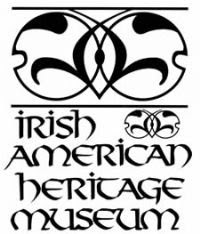 The Troy Newspaper Project has made considerable additions to their database that includes a multi-volume Index of Death and Marriage Records, transcribed from various Troy, NY newspapers.
The Troy Newspaper Project has made considerable additions to their database that includes a multi-volume Index of Death and Marriage Records, transcribed from various Troy, NY newspapers.
The Troy New York Daily Post for the years 1846 to 1851 is the FIFTH set of newspapers recently added to the Troy Irish Genealogy Website. There are 2,343 reported deaths and 2,143 names on the reported marriages during this period. These records will be of great interest to genealogy researchers since the information in this data base predates the 1880 New York State law requiring the reporting of death and marriage records.
You can view these records by going to the Troy Irish Genealogy website and clicking on PROJECTS and then click on THE TROY NEWSPAPER PROJECT. These records, like most of the TIGS data series, cover the general population in the area and are NOT restricted to Irish surnames.
One of the interesting deaths reported is the one for John Jacob Astor. Johann Jacob Astor was born July 17, 1763 in Walldorf, Palatinate, Germany and died March 29, 1848 in New York City. At the time of his death he was one of the wealthiest people in America with a fortune of 20 million dollars which is equivalent to 110 billion dollars in 2006 dollars. He is buried in Trinity Churchyard in New York City.
While 1,339 of the marriage records showed no indication of residence, those records where the residence was reported are of interest as they show numerous cities and towns throughout New York State as well as other states and even foreign countries. Some specifics are:
Most of the records were for the Capital District Area. Areas with the greatest number were Albany-51 records, Troy-888 records, Lansingburgh-29 records, Watervliet-12 records, Waterford-17 records, Schaghticoke-15 records, Sand Lake-40 records, Pittstown-20 records, Greenbush-15 records, Brunswick-41 records, Cohoes-9 records, West Troy-53 records, Berlin-16
records, Grafton-15 records, Hoosick-23 records, Schenectady-7 records, and Petersburgh-12 records.
There were a sizable number of records from the neighboring states of Massachusetts, Vermont and Connecticut. Connecticut has 14 records, Massachusetts had 58 records including 11 from Boston and Vermont had 59 records including 32 from Bennington.
For the New York City area, there were 5 records for Brooklyn and 43 records for New York City.
Residence was also indicated from the following states and Washington, DC: Arkansas, Alabama, Colorado, Illinois, Indiana, Kentucky, Louisiana, Maryland, Maine, Missouri, Michigan, New Jersey, New Hampshire, Ohio, Pennsylvania, Rhode Island, Virginia, and Wisconsin. Of interest is the number of records for the state of Wisconsin which had 13 records. Six of the records were from the Wisconsin Territory which was prior to Wisconsin becoming a state on May 29, 1848.
Foreign countries listed as the place of residence were Ireland, Scotland and Canada.
Two other transcription projects that are currently being worked on by the Troy Irish Genealogy Society. One of the projects is another Troy Newspaper, the Troy Daily Whig, covering the years 1834 through 1878. While the data entry has already been completed on these 44 years of newspapers, the files have to be analyzed and combined before they are posted to the website.
The other project being worked on is Book 1 of the interment records for St. Mary’s Cemetery in Troy, NY. Data entry of these interments, covering the years 1900 to 1910, is almost complete.
 The Franklin County Historical & Museum Society welcomes the public for genealogy research or casual use of the reading room during the summer open hours for the Schryer Center for Historical and Genealogical Research.
The Franklin County Historical & Museum Society welcomes the public for genealogy research or casual use of the reading room during the summer open hours for the Schryer Center for Historical and Genealogical Research.






